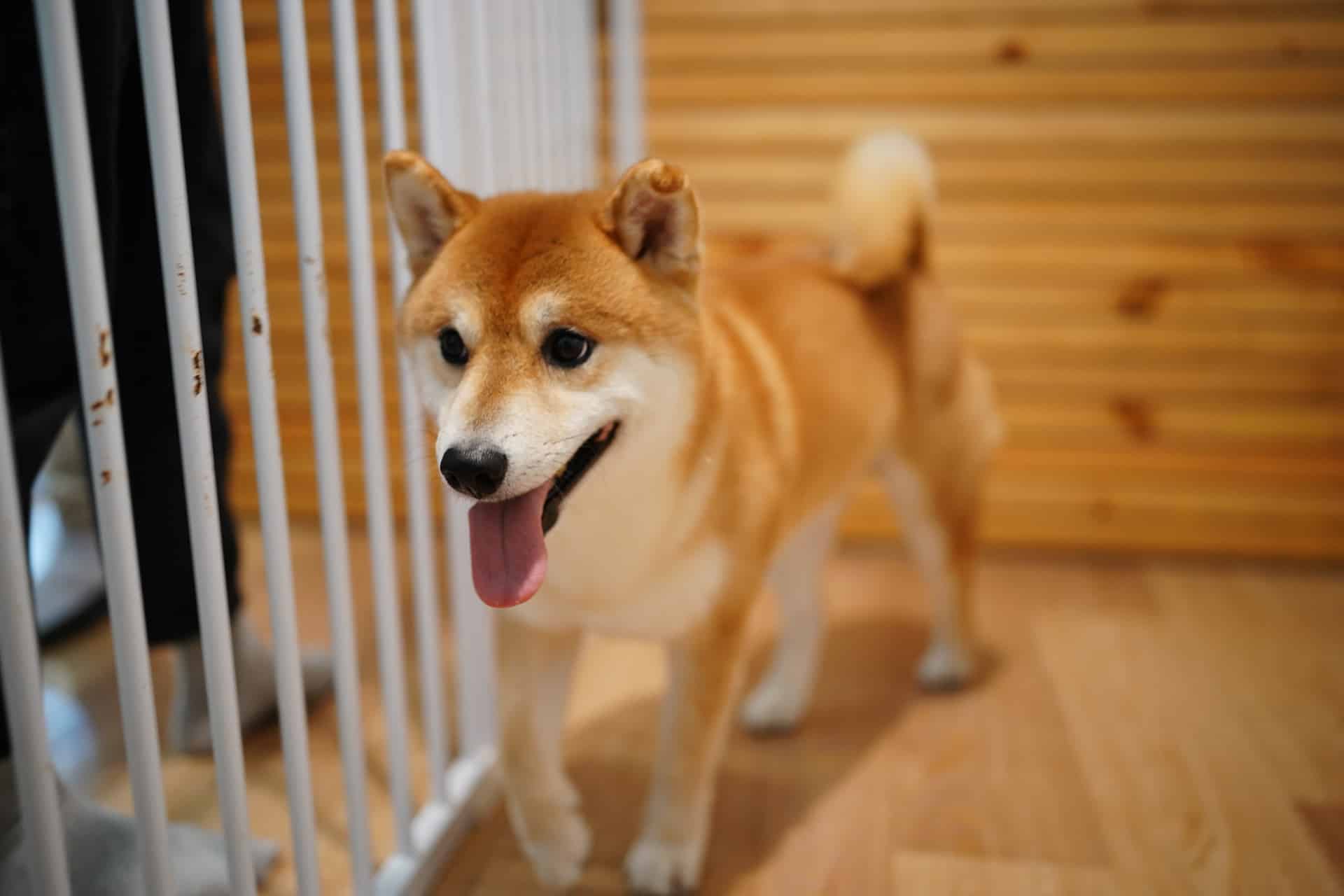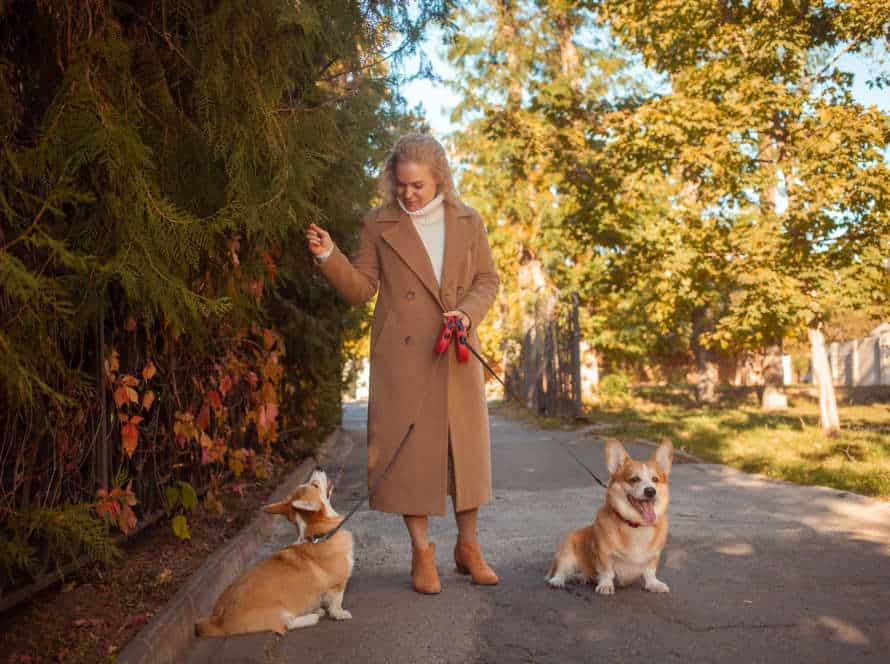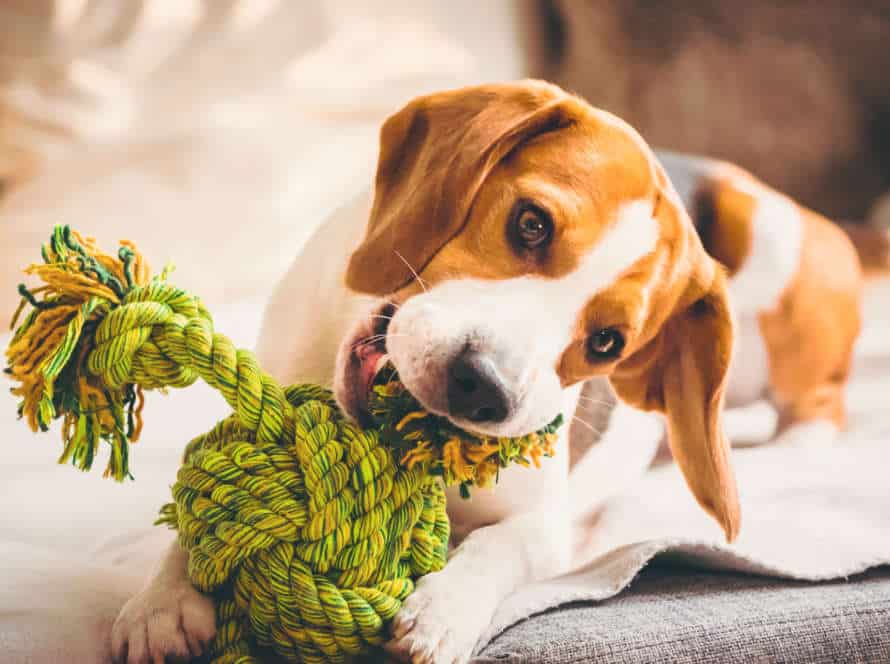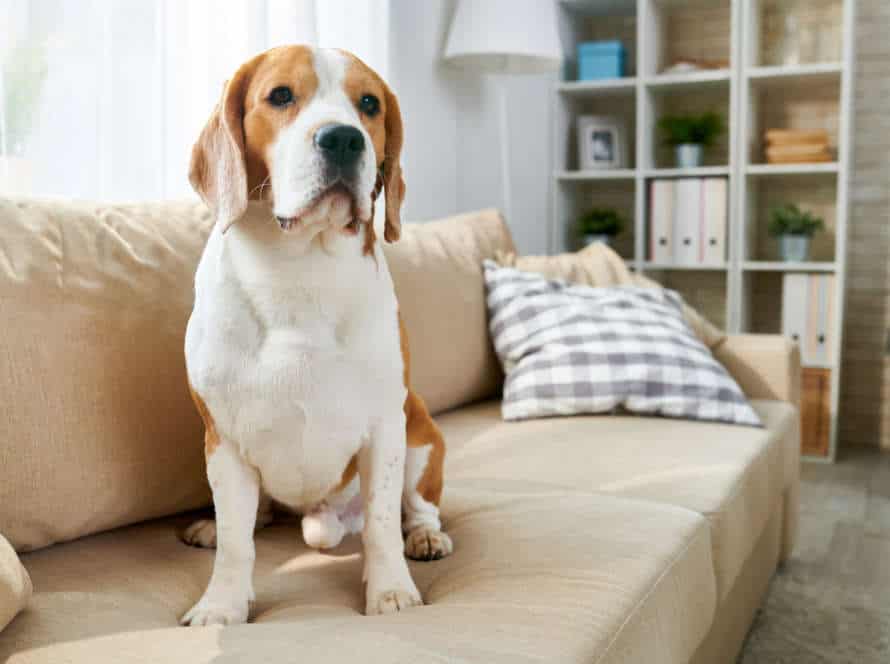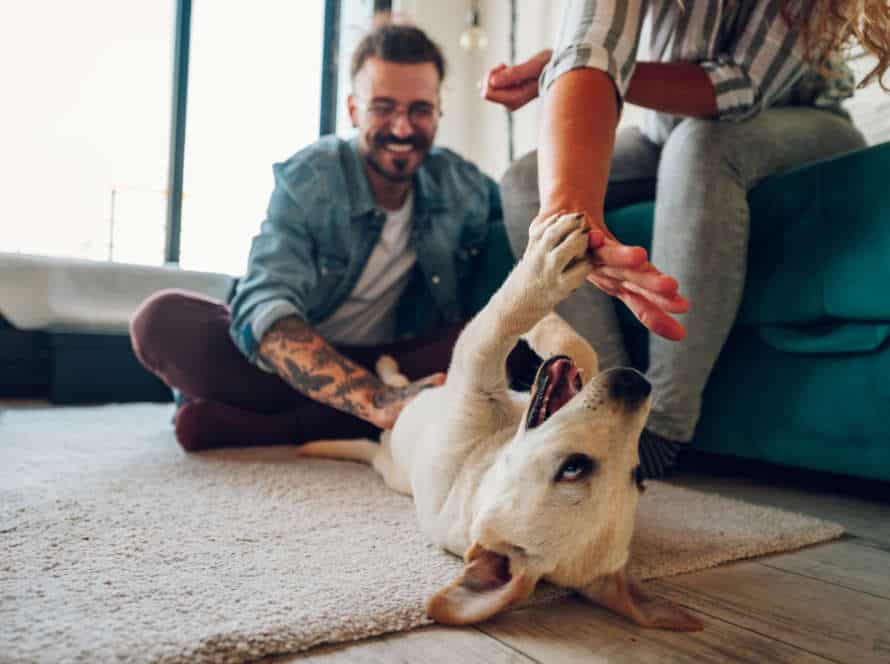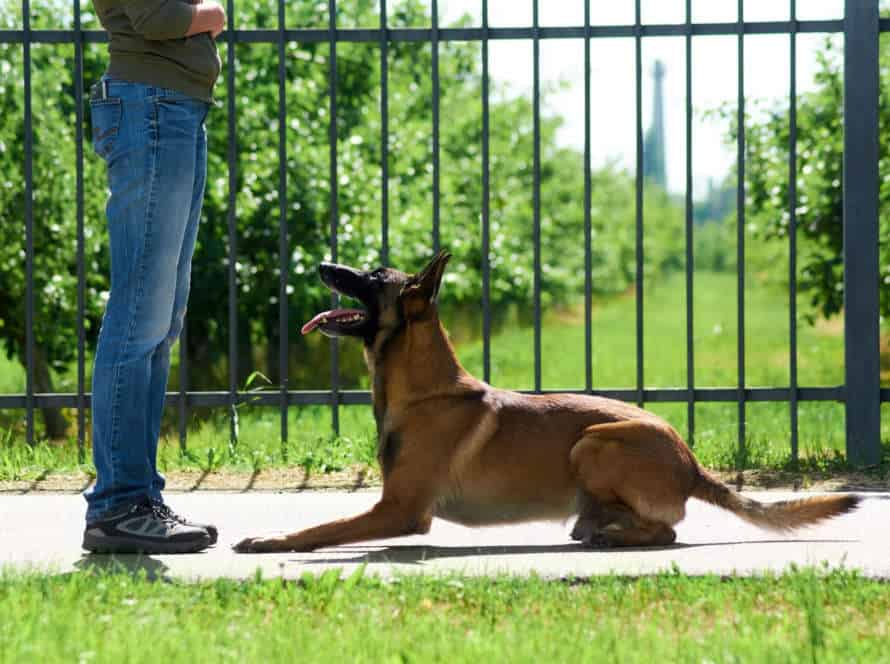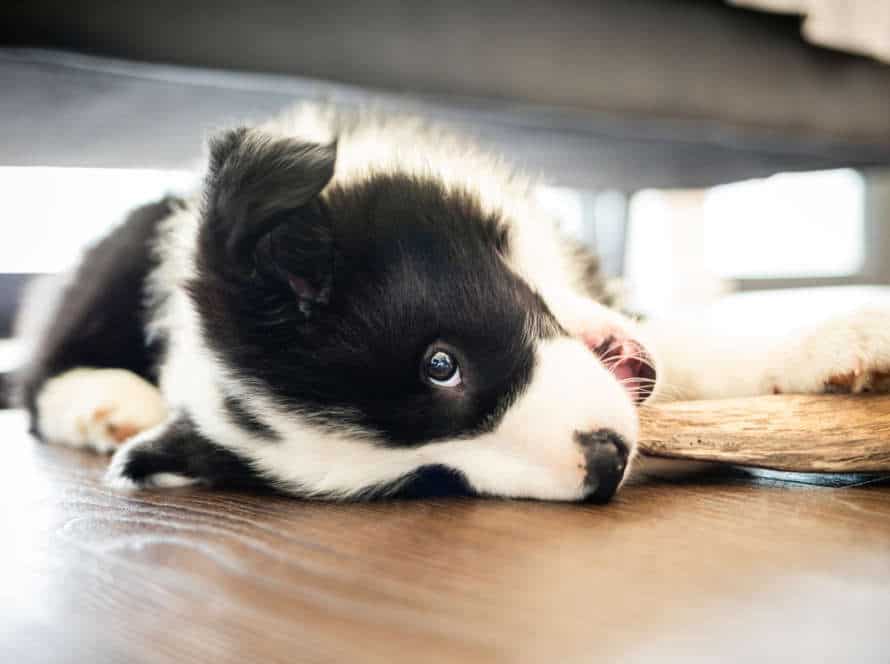How to Gradually Increase Time Between Potty Breaks
Gradually increasing potty breaks is a must for potty training your pup! With positivity and endurance, you can teach your dog to wait for longer. Here’s how:
- Start with the regular schedule. Raise the time between them by 15-30 mins.
- Observe your dog’s behavior and body language to know when they need to go outside.
- Reward them with treats, verbal praise or playtime when they wait for longer.
- Be patient. Every dog is different and may take more/less time to adjust.
Extending potty breaks will help your dog learn to wait and can speed up the training process.
Teach Your Dog to Hold It
Teaching your pup to wait is a key part of house training them. You must gradually increase the time between potty breaks for success. This method of potty training your dog may be tricky. However, if you are patient and dedicated, you can train your pup to wait and stay accident-free.
Let’s find out how to do this!
Take Your Dog Out on a Regular Schedule
Taking your pup out on a routine is important to teaching them when to go potty. Here’s the plan:
- Set up a consistent schedule.
- Take your pup out early in the morning, after they eat, after playtime, and before bed.
- Say a cue like “go potty” or “do your business” to help reinforce the behavior.
- Increase the time between potty breaks by 15-30 minutes, based on breed, age, and size.
- Reward them with praise and treats for good behavior.
- Be patient and stick to it. They will learn to hold it for longer periods of time.
Decrease the Number of Potty Breaks Incrementally
Training your pup to hold it is important for a healthy and well-mannered dog.
Decreasing the number of potty breaks in small amounts is a good way to increase the time between potty breaks. Monitor how often your dog needs to go outside and write it down.
Extend the time between potty breaks by a tiny amount each day. For example, if your dog usually needs to go out every 2 hours, change it to 2.5 hours tomorrow. Keep going up by 15-30 minutes each day until you reach 5-6 hour intervals.
Be patient, stay alert and give your dog lots of praise for good behaviour. Increasing the time between potty breaks helps your pup develop bladder control and stops accidents in the house.
Reinforce Good Behavior with Treats or Playtime
Reinforcing good behavior? Treats or playtime! This is a crucial step to teach your pup to hold it. Increasing the time between potty breaks is very important. You can reward your pup with treats, playtime, or anything else exciting. Here’s how to do it:
- Take your dog out every hour or two, depending on age and breed.
- If they hold it in after an hour, reward with a small treat and praise.
- Increase the time between potty breaks by 15-30 mins every few days.
- If they have an accident, don’t scold them. Take them outside and praise them when they go.
- Reward your pup with treats or playtime each time they hold it in for longer periods.
With consistency and persistence, they’ll learn! Accidents will be a thing of the past.
Make Changes to Your Dog’s Diet and Water Intake
To gradually stretch out potty breaks, put some changes in your pup’s diet and water. This will help you understand their toilet needs, and give you more control. Analyse what they eat and drink. This will help you work out the best plan for them.
Adjust Feeding Times
Adjusting your pup’s meal times can be a great way to give more time between potty sessions and teach your dog to hold it longer. Here are some tips:
- Gradually shift breakfast or dinner by 30 mins or 1 hour.
- Give your pup lots of fresh water all day but limit it in the 2 hours before bed.
- Take your pup out first thing in the morning and just before bed.
- Add a few minutes each day between pottys.
- Be patient and consistent. Over time, your dog will get used to the new schedule and stay dry longer.
Experiment with Different Types of Food
Experimenting with food can help you find the right diet for your pup and make them healthy. Follow these tips:
- Introduce new foods in small portions, and gradually increase the amount and frequency.
- Watch for any signs of allergy or intolerance when your dog tries something new.
- Always provide fresh water, especially when it’s hot or after exercise.
- Create a consistent feeding and watering schedule. This will help to gradually increase the time between potty breaks.
- Be patient and consistent with your pup’s diet and potty training. Pro tip: Ask your vet before making drastic changes to their diet.
Limit Water Intake at Certain Times
Restrict your pup’s water consumption at certain times for more time between potty breaks and better diet control. Here are some tips:
- Set a drinking schedule and keep to it. Don’t give too much water quickly, especially after exercise.
- Increase their water intake gradually to regulate bowel movement.
- Give your doggo fresh and clean water daily. You could also switch to a moisture-rich diet – this can make them stay hydrated for longer.
- Limit their water intake in the night to avoid midnight peeing.
- If they’re having frequent urination or any other digestion issues, ask a vet to check for medical conditions.
Pro Tip: Monitor your pup’s water intake and give them water and a balanced diet for best health.
Increase Your Dog’s Physical Activity
Get your pup movin’ for a fuller bladder! Gradually upping the exercise for your dog will help them last longer between potty breaks. How? By increasing their bladder capacity. Know more? Keep readin’! Find out how to safely up your dog’s physical activity.
Take Longer Walks
Want to boost your pup’s physical activity and potty breaks? Try taking longer walks! Here’s how:
- Start with several 10-15 minute walks throughout the day.
- Then, add 5-10 minutes every few days.
- Keep an eye on your dog’s behavior and physical ability. Make sure they’re comfortable and not overdoing it.
- Eventually, your pup will be able to go on longer walks and hold their potty breaks for longer.
Incorporate Exercise into Playtime
Incorporating exercise into playtime is great for your pup! It helps them stay fit, healthy and happy. Plus, it’s quality time with their owner.
Here are a few exercises to try:
- Fetch: Tossing a ball or Frisbee gets your pup sprinting and chasing. Great for cardiovascular and muscle conditioning.
- Tug-of-war: Using jaw and neck muscles to pull and hold the toy. Strengthen those muscles!
- Hide and Seek: Hiding toys or treats? Your pup uses their sense of smell and gets active.
Start slow if your pup isn’t used to exercising. Gradually increase intensity and duration. A 30-minute walk and 15-minutes of playtime is good to begin with. Increase gradually!
Consider Hiring a Dog Walker
Getting a dog walker is great for your pup! It boosts physical activity and keeps potty breaks on track. Here are some reasons why:
- Exercise helps keep your dog’s weight, heart and muscles healthy.
- A dog walker can help keep bathroom breaks regular and stop accidents in the house.
- Walking outside gives mental stimulation, socialization and prevents boredom and bad behavior.
If you have a busy lifestyle, consider hiring a certified, experienced dog walker. They can tailor the walks to your pup’s breed, age and health.
Address Underlying Medical Issues
Does your pup need to potty often? It could be due to a medical issue. Many pups and doggos with medical problems have potty trips caused by their body. Before you can lengthen the time between potty trips, you should look into any medical issues like urinary infections or bladder stones that can cause frequent pottying. Let’s explore this further!
Rule Out Any Underlying Health Issues
Before increasing potty breaks for your pet, rule out any health issues causing frequent urination. This includes urinary tract infections, kidney disease, and diabetes. Observe changes in urinary habits, like more urination or difficulty. Take your pet to the vet for a check-up and tests. Follow the vet’s plan of care, maybe including medicine, diet changes, or surgery. Once medical issues addressed, increase time between breaks by 10-15 minutes each day. Start with shorter intervals until pet gets used to holding bladder longer. Reward pet when they hold their bladder longer to reinforce positive behaviour.
Consider Medications or Supplements
Are you having difficulty spacing out potty breaks? Do you consistently find yourself rushing to the restroom? Meds or supplements can assist with any medical issues causing the difficulty. Here are some possible solutions:
- Antibiotics: Treat UTI, bladder infection, or kidney disease with antibiotics.
- Prescription: Meds can relax the bladder, increase urine capacity, and ease urgency and frequency.
- Supplements: Pumpkin seed extract & magnesium supplements can help relax the bladder, reduce inflammation, and increase bladder control.
Before you start any medications or supplements, it is essential to consult your healthcare provider. They can work out the right dose and talk about any potential side effects. In addition, good bathroom habits like no caffeine, keeping hydrated, and completely emptying bladder each time you go, can help decrease the frequency of restroom breaks.
Consult with Your Veterinarian
Are you having difficulty increasing the intervals between your pup’s potty breaks? Consult with your vet to identify any medical issues that could be the cause.
Urinary tract infections, bladder stones and diabetes are some medical conditions that might be to blame. Your veterinarian can conduct tests to pinpoint the problem and prescribe medication or treatment to help your dog regain bladder control.
Behavioral and environmental aspects might also be causing the issue. Ask your vet for advice on how to train your dog and which lifestyle changes will help you increase the time between potty breaks.
Remember: be patient and consistent in your training and reward your pup for good behavior. With effort and dedication, you can help your pup gain better bladder control and form a healthy routine.
Set Realistic Goals and Be Patient
Potty training needs patience and consistency. Teach your pup to take more time between potty breaks – it’ll help them become toilet-trained and avoid mishaps in the house. Set realistic goals. Be patient while teaching them. Here are tips and strategies to help you and your pup. Enjoy potty training!
Don’t Expect Overnight Results
It is essential to have realistic objectives and expectations when stretching out potty breaks for your pup. It is feasible to lengthen the time between bathroom trips, but don’t assume instantaneous success. Dogs, similarly to humans, can have their own unique bladder control and patterns, so it may take time to adjust.
These are some matters to remember:
- Begin small and incrementally raise the time between breaks by 15 to 30 minutes per day.
- Ensure your dog has numerous chances to use the restroom outside, particularly after resting, eating, or playing.
- Keep watch of your pup’s actions for signs of restlessness, whining, or sniffing, which could show they need a potty break.
Recollect, patience and constancy are critical when educating your canine to wait longer. Don’t anticipate immediate results and rejoice each milestone. Tip- Never reprimand your pooch for messes, as this will only impede the training process.
Be Empathetic and Understanding
To successfully train your dog to stay between potty breaks, you must be understanding and kind. Set realistic goals and have patience with the process. Here are some tips:
- Start small, then increase the time.
- Look out for signs like sniffing or circling.
- Reward good behavior, never punish accidents.
- Remember, every pup learns differently.
Patience and consistency will help. Eventually, your pup will be able to hold it longer – and you’ll both be happy with the outcome!
Celebrate Small Victories
It’s key to celebrate your pup’s small victories when potty-training. Aim for realistic goals, be patient and give positive feedback. Here’s what to do:
- Set achievable goals – start with 20 minutes, then increase.
- Teach basic commands and reward good behavior.
- Stick to a consistent routine for breaks.
- Acknowledge progress by celebrating small victories like longer breaks or going outside.
- Be patient and consistent. Your pup will eventually develop bladder control and go longer between breaks.
Pro Tip: Incorporate playtime and exercise into the routine – this can help reduce the frequency of potty breaks.
Frequently Asked Questions
Q: How often should I take my puppy outside to go potty?
A: Puppies typically need to go outside every 1-2 hours during the day, but the frequency may vary based on age, size, and activity level.
Q: How do I gradually increase the time between potty breaks for my puppy?
A: Start by increasing the time between potty breaks by 15-30 minutes each day. Be observant and patient with your puppy, and make sure to reward them for successful potty breaks.
Q: What are some signs that my puppy needs to go outside?
A: Signs include sniffing, circling, whining, or scratching at the door. It’s also helpful to establish a consistent routine for potty breaks.
Q: Should I punish my puppy if they have an accident inside the house?
A: No, punishing your puppy for accidents can be confusing and counterproductive. Instead, focus on positive reinforcement for successful potty breaks.
Q: How long does it typically take for a puppy to be fully potty-trained?
A: Potty-training can take several weeks to several months, depending on the puppy’s age, breed, and temperament. Consistency and patience are key.
Q: Are there any products or tools that can help with potty-training?
A: Yes, products like puppy pads, indoor dog potties, and scent attractants can be helpful in encouraging your puppy to go in the right spot. Crate training can also aid in potty-training.

